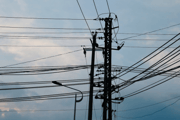You won't believe the sneaky change one shopper found in Woolworths' digital price tags!
Woolworths, one of Australia's largest supermarket chains, has recently made a significant change to its digital price tags—a move that has been praised and criticised by customers.
The change comes in response to a wave of complaints about the size and readability of the new electronic shelf labels, which were introduced earlier this year.
The supermarket giant rolled out the electronic shelf labels in early 2022 as part of its sustainability efforts to reduce paper waste and streamline staff resources.
The digital tags were designed to display the latest prices and specials in real-time, reducing the need for manual ticketing and allowing staff to focus more on customer service and restocking shelves.
However, the transition to digital was not without its hiccups.
Many customers complained that the new tags were too small to read, particularly for items on sale.
Traditionally, Woolworths used large yellow paper stickers to advertise half-price and reduced items. The digital labels for these special buys were a fraction of the size of the old tags, making them difficult to spot and read.
One disgruntled customer shared, 'Not liking the sale signs at Woolworths. You have to look really hard to see them. I only noticed because I knew Cenovis vitamins were half-price but couldn’t see any tags.'
Another customer, who is colour blind and has poor eyesight, lamented the difficulty of browsing for long tags among a sea of tiny ones to find sale items.
‘I actually browse to see long tags—not stop to look at a million tiny tags to see what’s on sale,’ they shared.
The complaints didn't stop there. Some customers pointed out that the small digital tags were not disability-friendly, making shopping a challenging experience for those with visual impairments.
In response to the feedback, Woolworths has made a significant change to its electronic shelf labels.
A sharp-eyed shopper named Adrian shared footage of the new, larger format digital tags at Woolworths' new store in Ashfield North, Sydney.
The video shows that the tags have doubled in size, making the price and any reductions much clearer and easier to read.
Woolworths confirmed the change to a news source, stating that the larger format shelf tags were designed to make shopping easier for customers and team members.
‘These electronic labels are designed to reduce paper, update the latest prices and specials in real-time, and reduce manual ticketing to allow our team to focus on serving customers and replenishing shelves,’ the retailer stated.
The electronic shelf labels also enable team members to track where a product is on the shelf, helping them locate items quickly.
You can watch Adrian’s video here:
The Evolution of Retail Technology: A Closer Look
The move to digital price tags is part of a broader trend in the retail industry towards using technology to improve efficiency and customer experience. Electronic shelf labels offer several advantages over traditional paper tags.
They can be updated in real-time, allowing dynamic pricing and instant promotion updates. They also reduce the need for manual labour and paper waste, making them a more sustainable option.
However, as the Woolworths case shows, the transition to digital isn't always smooth. Retailers must consider factors such as readability and accessibility when designing and implementing digital tags. Customer feedback is crucial in this process, as it helps retailers identify and address any issues.
It’s not the only issue with the digital price tags. Last July, a Woolies shopper in Sydney pointed out an 'infuriating' issue with the technology, which often displayed 'temporarily unavailable' for items present on the shelves. You can read this article here.

What are your thoughts on the new digital price tags at Woolworths, members? Have you noticed the change in your local store? Share your experiences in the comments below.
The change comes in response to a wave of complaints about the size and readability of the new electronic shelf labels, which were introduced earlier this year.
The supermarket giant rolled out the electronic shelf labels in early 2022 as part of its sustainability efforts to reduce paper waste and streamline staff resources.
The digital tags were designed to display the latest prices and specials in real-time, reducing the need for manual ticketing and allowing staff to focus more on customer service and restocking shelves.
However, the transition to digital was not without its hiccups.
Many customers complained that the new tags were too small to read, particularly for items on sale.
Traditionally, Woolworths used large yellow paper stickers to advertise half-price and reduced items. The digital labels for these special buys were a fraction of the size of the old tags, making them difficult to spot and read.
One disgruntled customer shared, 'Not liking the sale signs at Woolworths. You have to look really hard to see them. I only noticed because I knew Cenovis vitamins were half-price but couldn’t see any tags.'
Another customer, who is colour blind and has poor eyesight, lamented the difficulty of browsing for long tags among a sea of tiny ones to find sale items.
‘I actually browse to see long tags—not stop to look at a million tiny tags to see what’s on sale,’ they shared.
The complaints didn't stop there. Some customers pointed out that the small digital tags were not disability-friendly, making shopping a challenging experience for those with visual impairments.
In response to the feedback, Woolworths has made a significant change to its electronic shelf labels.
A sharp-eyed shopper named Adrian shared footage of the new, larger format digital tags at Woolworths' new store in Ashfield North, Sydney.
The video shows that the tags have doubled in size, making the price and any reductions much clearer and easier to read.
Woolworths confirmed the change to a news source, stating that the larger format shelf tags were designed to make shopping easier for customers and team members.
‘These electronic labels are designed to reduce paper, update the latest prices and specials in real-time, and reduce manual ticketing to allow our team to focus on serving customers and replenishing shelves,’ the retailer stated.
The electronic shelf labels also enable team members to track where a product is on the shelf, helping them locate items quickly.
You can watch Adrian’s video here:
The Evolution of Retail Technology: A Closer Look
The move to digital price tags is part of a broader trend in the retail industry towards using technology to improve efficiency and customer experience. Electronic shelf labels offer several advantages over traditional paper tags.
They can be updated in real-time, allowing dynamic pricing and instant promotion updates. They also reduce the need for manual labour and paper waste, making them a more sustainable option.
However, as the Woolworths case shows, the transition to digital isn't always smooth. Retailers must consider factors such as readability and accessibility when designing and implementing digital tags. Customer feedback is crucial in this process, as it helps retailers identify and address any issues.
It’s not the only issue with the digital price tags. Last July, a Woolies shopper in Sydney pointed out an 'infuriating' issue with the technology, which often displayed 'temporarily unavailable' for items present on the shelves. You can read this article here.
Key Takeaways
- Woolworths supermarket has adjusted its digital price tags in response to customer criticisms.
- Customers complained that the new electronic tags were difficult to read, especially for discounted items.
- In response, Woolworths has significantly increased the size of its electronic shelf labels to improve visibility.
- Woolworths stated that the electronic labels streamline updating pricing and specials and reduce manual ticketing, freeing team members to focus more on customer service and stocking shelves.
What are your thoughts on the new digital price tags at Woolworths, members? Have you noticed the change in your local store? Share your experiences in the comments below.









